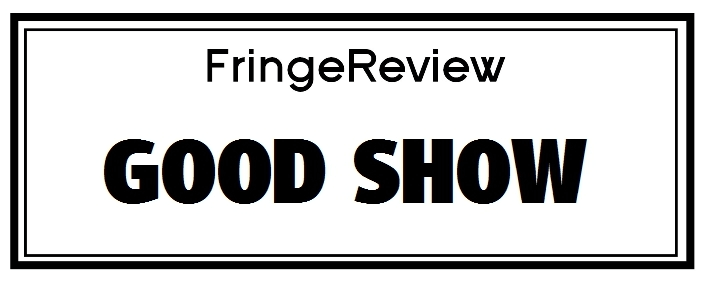Edinburgh Fringe 2021
I/O
Chiharu Kuronuma and Teruki Okamoto (Japan)

Genre: Contemporary, Dance
Venue: C ARTS / C venues/ C digital
Festival: Edinburgh Fringe
Low Down
A double-bill of two pieces, one from calligrapher and choreographer Chiharu Kuronuma and one from juggler Teruki Okamoto. They investigate choreography as a part of a research process that unites dance and juggling with other perspectives of calligraphy and digital programming. Kuronuma has developed a theoretical framework for integrating 2D calligraphy into a 3D bodily expression by employing aspects of the Laban Movement Analysis. Okamoto has been working on the discovery of the Principle of Motion.
Review
I/O comprises two unrelated creative filmed performances that are works in progress – where both performers are exploring movement and space.
In the first piece, Teruki Okamoto, stands silhouetted on a dark background with animated narrow black and white line diagrammes that come to life by stretching and decreasing, multiplying and tracking the space between his hands holding juggling balls and their placement on the floor. This is a clever mix of technology, movement and juggling skills.
The sixteen minute piece is separated into chapters with headings and a statement by Okamoto, such as “A part of Empties …Since all movements have occurred when the force of the energy is applied to the shape of the object, both the shape of the human and the material are equivalent before applying energy…”
Set to a score that ranges from chimes, techno sounds, ethereal to rhythmic music, Okamoto is an accomplished juggler and the animated images on the large background screen are fascinating.
At times Okamoto, wearing black standing in front of a dark background is difficult to see perform his juggling, and other times the energetic and sensory ever moving background takes focus from him. Very brief moments that show just Okamoto are welcome and I would enjoy seeing more. This piece is intriguing and will benefit from streamlining – such as solidifying the focus, the subject – and exploring it and the performer’s relationship to the viewer.
The second piece by Chiharu Kuronuma begins with a chapter and statement “Flow – This piece is focused on the flow of the lines and the speed of motion in calligraphy…” she shows the flow of the lines in calligraphy as a physical expression. This is a curious idea and Kuronuma enters the space moving slowly at first, with angular arm gestures and fluid body movement.
The abstract concept and choreography includes repetitive motifs while kneeling, arms crossing the body, coming together and unfolding upwards in a semi circular shape, then these sequences evolve into different shape, angles and movement dynamics. There is an elegance and determination to Kuronuma’s movement, which is compelling.
This piece is set to melodic music and airy atmosphere sounds, which complement the piece effectively.
Placement of each of the three calligraphy sculptures on small platforms around the stage area is interesting but may limit the space for movement. Another choice is when the calligraphy sculptures are placed in front of camera is rather noisy and takes us out of the piece briefly, as well as masks Kuronuma moving behind them.
This twenty-five minute piece has much promise and is ready for condensing – editing the plethora of creative ideas, themes and choreography into a more concentrated piece. For example, the last section is the most complete and it could stand alone or benefit from a little more development, without showing the linear process as in the first two sections.
Both of these performers are investigating movement related to themes and technology in their own way and I encourage them to continue this journey as creative artists.


















































